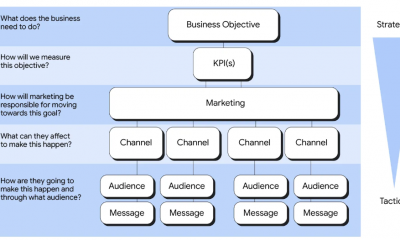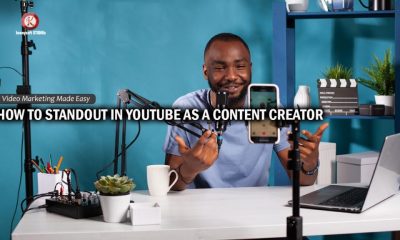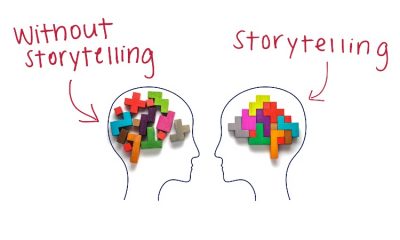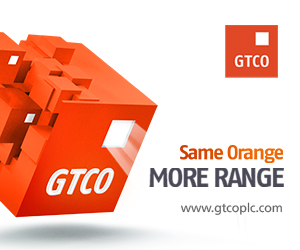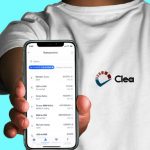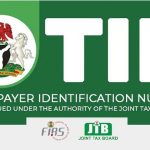Brands/Products
How Effective is Storytelling in Marketing?

By Kenneth Horsfall
To begin with, what is storytelling generally? According to wikipedia.org, storytelling is the social and cultural activity of sharing stories, sometimes with improvisation, theatrics or embellishment.
Every culture has its own stories or narratives, which are shared as a means of entertainment, education, cultural preservation or instilling moral values.
Crucial elements of stories and storytelling include plot, characters and narrative point of view. The term “storytelling” can refer specifically to oral storytelling but also broadly to techniques used in other media to unfold or disclose the narrative of a story.
Storytelling is one of the oldest yet most powerful communication tools we have as humans. Stories help us to share, engage and comprehend in ways few other mechanisms can.
In marketing, storytelling provides an avenue to connect to consumers unlike any other. Brands are empowered to share and sell their values and personality in a form that feels less like advertising and more like a concerted effort to strengthen customer relationships.
Storytelling’s importance to marketing is undeniable; Jennifer Aaker, a professor at Stanford’s Graduate School of Business, puts forward three core reasons as to why:
- Stories Shape How People See You
- Stories Are Tools Of Power
- Stories Persuade And Move People To Action
- Stories shape how people see you:
Brand narratives help form perceptions and attitudes. How people speak about and the way a brand presents itself all influence key metrics such as purchase consideration and brand loyalty. There is power in crafting stories to develop a desired identity and authenticity that hopefully resonates with consumers.
Try thinking about a brand you particularly like. Now imagine they were a person. How would you describe them to friends?
- Stories are tools of power:
One of the best things about a great story is the ability to engross and capture an audience completely. Think about the last book you read that you just couldn’t put down or a party you’ve been to where someone shared an anecdote that had people hooked on every word. Often is the case, you’re completely absorbed in what your reading/hearing and time feel like it slows down around you.
In the world of marketing, communicating a great story has the potential to cut through much of the monotony of today’s advertising by presenting something that is unique and captivating, making consumers stop and listen.
- Stories persuade and move people to action:
Stories are far more impactful in promoting retention and behaviour than functional messaging. A London School of Business study found that when people hear statistics alone, “they retain only 5% to 10%” of what they’ve heard. Yet, “when stories are used to convey the same information, retention jumps to a remarkable 65 to 75%.”
Now, understanding the importance of storytelling, what makes an engaging story? How do marketers create a desired feeling and experience for their consumers to help drive brand connection?
Matthew Luhn, story consultant and animator known for his work in Pixar movies such as Toy Story, Ratatouille and Inside Out, shares five core elements he believes all great stories should possess:
- Hook
- Character transformation
- Connection with the audience
- Authenticity
- Structure
- Hook:
The hook relates to the story’s core theme. In essence, what will draw people in and make them compelled to see what is about to unfold? Luhn explains it usually needs to be something unusual or unexpected to grab the audience’s attention immediately.
- Character transformation:
Once you have captured the attention of the audience, it is important to take them on a journey. Stories inspire transformation. People tend to live vicariously through characters. It is, therefore, essential to question; what is the message we are hoping to convey, and how will this advertisement effect a change in the consumer?
- Connection with the audience:
A story may be expertly crafted in hook and transformation, but if you don’t truly understand the audience you are trying to appeal to, it is likely to become lost or ignored. It’s not simply a case of knowing demographics either; a strong comprehension of things like audience values and motivators is critical for connection. Luhn uses the example of Ratatouille:
- Authenticity
Authenticity is perhaps one of the most difficult aspects of storytelling in marketing, Consumers are often wary that they are being advertised to. It is, therefore, important to communicate something that comes from a piece of truth based on enduring insight rather than something that feels manufactured.
- Structure
Finally, how the story is told is critical for its success. Simply put, structures that comprise a set-up, conflict and pay-off are believed to be most effective in storytelling.
Storytelling is a powerful method of learning. As marketers, we should always seek to learn more about the world we live in, the brands we represent, and the consumers we serve. One of the things that are unique about stories is that they transmit knowledge and meaning. We learn from observations and first-hand experiences and by sharing those experiences through stories.
Storytelling can be a powerful tool that enables marketers to understand what is going on in the marketplace and what that means for the customer, consumer, society, brand, and company.
In addition to being an important strategic tool, storytelling can be an important tactical tool that lets marketers engage consumers in a fragmented media world. Because there is such media fragmentation, consumers are not just looking for different experiences but different delivery. Why should a consumer give you their time? Storytelling isn’t just a creative approach to marketing. It gives your consumers a totally different entry to your brand.
Kenneth Horsfall is the creative director and founder of K.S. Kennysoft Studios Production Ltd, fondly called Kennysoft STUDIOs. Kennysoft STUDIOs is a Nigerian Video and Animation Production Studio. He is also the founder and lead instructor at Kennysoft Film Academy. He can be reached via [email protected]
Brands/Products
JMG Installs Solar Power Systems at Three NIPCO Fuel Stations

By Aduragbemi Omiyale
Nigeria’s trusted hybrid and integrated electromechanical energy provider, JMG Limited, has completed the installation of solar power systems at three key fuel stations of NIPCO Plc.
The clean energy source was installed at NIPCO’s petrol dispensing outlets in Gwagwalada Abuja, Lekki Lagos, and Mpape Abuja.
This will help the organisation eliminate diesel reliance, and unlock more than N44 million in annual energy cost savings.
The installations feature advanced hybrid systems, combining solar arrays, lithium battery storage, and smart inverters to provide 24/7 energy for fuel pumps, lighting, and office operations. Each site has reported zero use of electricity or generator power since the systems were installed.
The three NIPCO stations now run on an advanced hybrid solar system that combines high‑efficiency PV panels, intelligent lithium‑battery storage and smart inverters.
Since commissioning, the sites have operated with zero grid or generator power, providing silent, clean, uninterrupted electricity for pumps, lighting and administration.
“We are proud to help NIPCO lead the energy transition at the retail level.
“The scalable architecture can be sized to each location and has already delivered significant savings, about 88,535 kWh/year, N44.4 million in annual cost savings and a 43.8‑tonne reduction in CO₂ emissions,” the Head of JMG’s Hybrid Solar Division, Mr Abbass Hussein, stated, adding that, “Collaborating with NIPCO on this initiative demonstrates a practical pathway for other firms to reduce both emissions and energy expenses.”
Also commenting, NIPCO’s Station Manager at Gwagwalada, Mr Idoko Jacob, said, “The stations have not relied on electricity or generator power on bright-weather days since commissioning. The solar systems fully meet our daily energy needs during such periods. On days with poor weather, we supplement the solar system with generator power to ensure uninterrupted operations.”
Business Post gathered that the NIPCO Gwagwalada Station has a solar output of 42,450 kWh/year, annual savings of N15.6 million, and CO₂ reduction of 15,332.76 kg/year, with a system installed consisting of a 20kW Deye LV Hybrid Inverter, 26.8kWp Solar PV, and 51.2kWh Lithium Battery Storage.
The NIPCO Lekki Station has a solar output of 3,635 kWh/year, annual savings of N12 million, and CO₂ reduction of 13,130.1 kg/year, with a system installed consisting of a 25kW Must Hybrid Inverter, 22.95kWp Solar PV, and 76.8kWh Lithium Battery Storage.
As for the NIPCO Mpape Station, it has a solar output of 42,450 kWh/year, annual savings of N16.8 million, and CO₂ reduction of 15,332.76 kg/year, with a system installed consisting of a 20kW Deye LV Hybrid Inverter, 26.8kWp Solar PV, and 61.44kWh Lithium Battery Storage.
Brands/Products
MAGGI Unveils ‘Taste of Christmas’ Campaign

MAGGI, the culinary brand from Nestlé Nigeria, has announced the launch of its festive campaign, Taste of Christmas, designed to celebrate the sights, sounds, and flavours that define the Nigerian Christmas experience.
Central to the campaign is a collaboration with Nigeria’s fast-rising pop star Qing Madi and the renowned Loud Urban Choir, resulting in a new Christmas anthem titled Taste of Christmas.
Now available across all major music streaming platforms, the song blends contemporary sound with cultural warmth, evoking the joy of family, togetherness, and shared meals that characterize the season.
Extending beyond music, the Taste of Christmas campaign will roll out a curated series of festive recipes and culinary inspiration over a 12-day period. The collection features creative twists such as Coco Bongus, alongside beloved Nigerian classics, encouraging families to explore new flavours while enjoying MAGGI’s trusted range of seasonings.
Commenting on the campaign, the Category Manager for Culinary at MAGGI, Ms Funmi Osineye, said, “Christmas is a time when family, culture, and shared experiences come alive. With the Taste of Christmas campaign, we set out to create a platform that resonates strongly with today’s young adults while still celebrating the warmth of home. Partnering with Qing Madi and The Loud Urban Choir allows us to connect music and food in a way that feels authentic, modern, and deeply Nigerian.”
The campaign further reflects MAGGI’s commitment to celebrating home-grown talent, nurturing culinary creativity, and strengthening the role of food as a unifying force in Nigerian homes.
Consumers can access festive recipes, campaign content, and the Taste of Christmas anthem on MAGGI’s digital platforms and social media channels. Conversations around the campaign can be followed using #MAGGIChristmas.
MAGGI is a leading culinary brand from Nestlé Nigeria, committed to inspiring better cooking habits and bringing families together through delicious, nutritious meals.
Brands/Products
FG Suspension of Sachet Alcohol Ban Excites NECA

By Modupe Gbadeyanka
The decision of the federal government to suspend the ban on alcohol produced in sachets has been welcomed by the Nigeria Employers’ Consultative Association (NECA).
The Director-General of the group, Mr Adewale-Smatt Oyerinde, described it as a right step in the right direction because it respects existing National Assembly resolutions and restores regulatory clarity.
Recall that recently, the Office of the Secretary to the Government of the Federation (OSGF) ordered the suspension of the policy due to concerns raised by the House of Representatives Committee on Food and Drugs Administration and Control.
In a statement, the NECA chief said the immediate suspension of all enforcement actions relating to the proposed ban on sachet alcohol and 200ml PET bottle products, pending the conclusion of consultations and the issuance of a final policy directive, was good for the industry and the economy.
According to him, the sachet and PET segment of the alcoholic beverage industry accounts for a significant portion of the estimated N800 billion invested in the sector and supports thousands of direct and indirect jobs in manufacturing, packaging, logistics, wholesale and retail.
He stressed that in an economy already struggling with high unemployment and rising business costs, abrupt policy measures that threaten existing jobs and legitimate investments would be counterproductive.
“We fully acknowledge the need to address public health concerns, especially regarding children and young people, but the solutions must be evidence-based and carefully designed so as not to drive activities into the informal and unregulated economy or encourage illicit products.
“We are looking forward to a deepened consultation to enable the protection of jobs, livelihoods and legitimate investments, etc., while also ensuring that public health objectives are effectively and sustainably achieved,” Mr Oyerinde said.
-

 Feature/OPED6 years ago
Feature/OPED6 years agoDavos was Different this year
-
Travel/Tourism9 years ago
Lagos Seals Western Lodge Hotel In Ikorodu
-

 Showbiz3 years ago
Showbiz3 years agoEstranged Lover Releases Videos of Empress Njamah Bathing
-

 Banking7 years ago
Banking7 years agoSort Codes of GTBank Branches in Nigeria
-
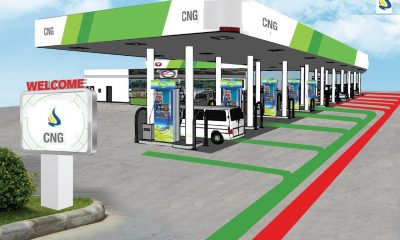
 Economy3 years ago
Economy3 years agoSubsidy Removal: CNG at N130 Per Litre Cheaper Than Petrol—IPMAN
-

 Banking3 years ago
Banking3 years agoFirst Bank Announces Planned Downtime
-

 Banking3 years ago
Banking3 years agoSort Codes of UBA Branches in Nigeria
-

 Sports3 years ago
Sports3 years agoHighest Paid Nigerian Footballer – How Much Do Nigerian Footballers Earn





